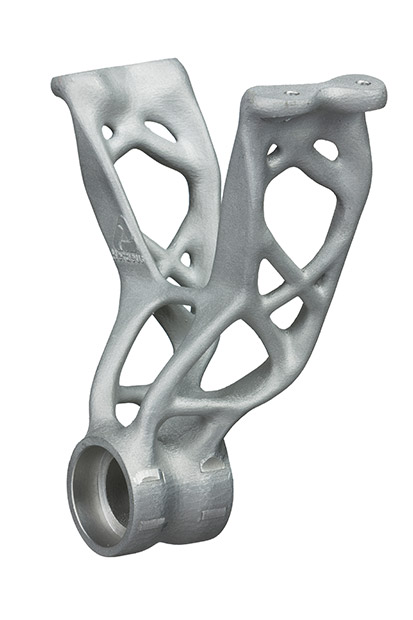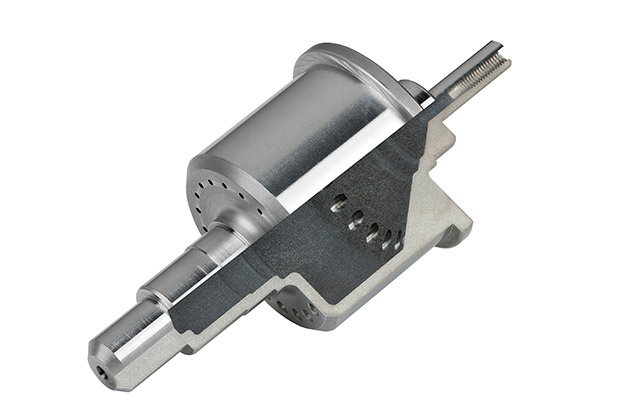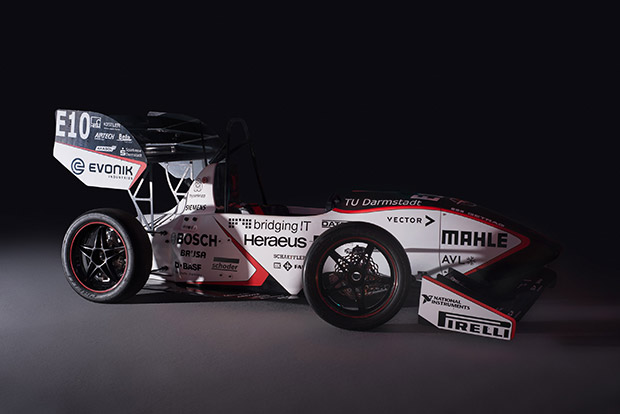Student Racecar’s 3D-Printed Steering Shaft Bearing Reduces Weight
Latest News
June 8, 2017
The new TU Darmstadt racecar for the current Formula Student competition contains five ultralight 3D-printed components from Heraeus.
A steering shaft bearing made out of a special aluminum alloy (AlSi10Mg) is nearly 50% lighter than the previous component, according to the company. The new steering shaft bearing, designed and printed by Heraeus precisely to the specifications of the TU Darmstadt racing team, now weighs barely 300 grams while maintaining the same mechanical strength and stability.
 The new TU Darmstadt racecar for the current Formula Student competition contains five ultralight 3D-printed components from Heraeus.
The new TU Darmstadt racecar for the current Formula Student competition contains five ultralight 3D-printed components from Heraeus.“We completely redesigned the part and optimized it through simulations to achieve the maximum weight reduction. The combination of materials and construction expertise with printing know-how was crucial for reaching this ambitious goal,” says Tobias Caspari, head of Heraeus Additive Manufacturing.
 The steering shaft bearing made out of a special aluminum alloy by Heraeus is nearly 50% lighter than the previous component.
The steering shaft bearing made out of a special aluminum alloy by Heraeus is nearly 50% lighter than the previous component.For the new TU Darmstadt racecar, the Heraeus team also printed a total of four motor shafts for each wheel suspension, which are 50% lighter than their predecessors. “The Formula Student is a good testing ground for our young development team, where they can test and optimize new designs and materials for additive manufacturing,” Caspari says.
 For the new TU Darmstadt racecar, the Heraeus team printed a total of four motor shafts for each wheel suspension, which are 50% lighter than their predecessors.
For the new TU Darmstadt racecar, the Heraeus team printed a total of four motor shafts for each wheel suspension, which are 50% lighter than their predecessors.“Additive manufacturing, which involves building up layer upon layer of metal powders, makes it possible to construct much lighter but still stable functional components with entirely new design possibilities. At the same time, we conserve resources and can recycle any excess powder,” says Caspari.
 For the racecar 2016 of TU Darmstadt Racing Team 3D-printing products made by Heraeus were already used.
For the racecar 2016 of TU Darmstadt Racing Team 3D-printing products made by Heraeus were already used.For more info, visit Heraeus.
Sources: Press materials received from the company.
Subscribe to our FREE magazine, FREE email newsletters or both!
Latest News






